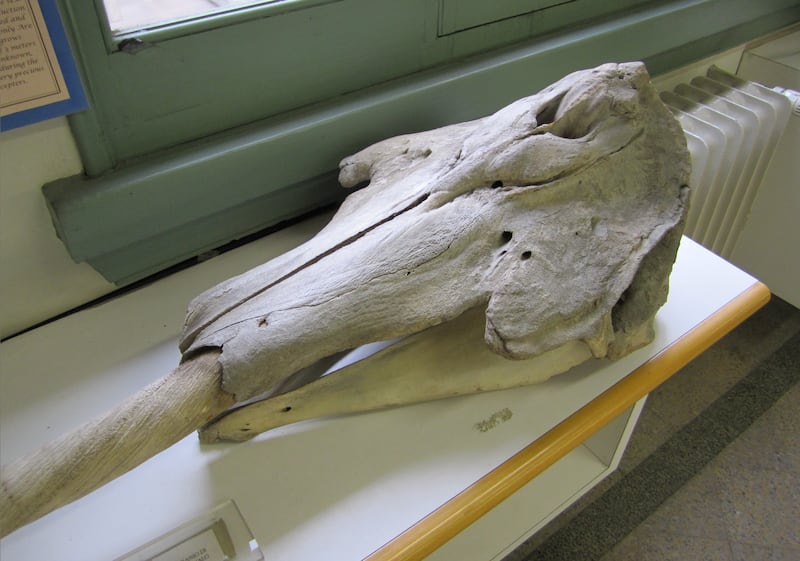Male narwhals use their unicorn-like tusks for mating rituals and combat with rivals, scientists believe.
US researchers analysing data from 245 adult males found some of the largest had disproportionately long tusks.
According to the team, having long tusks gives male narwhals an advantage when looking for a mate or showing aggression towards fellow males, a process called sexual selection.
Zackary Graham, a PhD student at Arizona State University’s School of Life Sciences, said: “We suggest that the narwhal tusk is a sexually selected signal that is used during the male-male tusking contests.
“The information that the tusk communicates is simple: ‘I am bigger than you’.”

Narwhals, like walruses and elephants, grow tusks, which are actually modified teeth.
They grow out of the narwhal’s head in a spiral pattern and can be be as long as 8ft, giving the creatures a unicorn-like appearance.
Although this trait in mainly seen in males, some females have also been found to have tusks.
On rare occasions, males have been seen with two tusks.
To find out more about their function, the researchers analysed the shape, size and structure of 245 adult males.
The team found that males of the same body size can have tusks of different lengths, ranging from 1.5ft to 8.2ft.
But despite these large differences, tail size did not show the same level of variation, measuring between 1.5ft and 3ft.
The researchers said the results provide the “best evidence to date” that narwhal tusks are used to fight off other males or attract mates, as traits determined by sexual selection often show disproportional growth in individuals of the same age.
According to the team, this is because many sexual characteristics are highly sensitive to nutrient and body condition, so only the strongest individuals have the energy to produce the largest traits.
Mr Graham said: “Overall, our evidence supports the hypothesis that the tusk functions both as a sexually selected weapon and sexually selected signal during male-male contests.
“However, further evaluations of the narwhal’s ecology are warranted.”
The findings are published in the journal Biology Letters.








